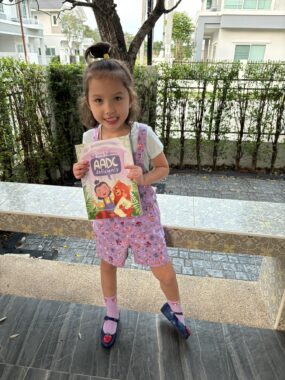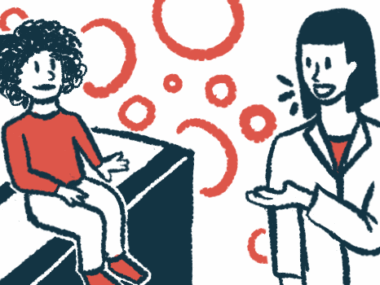Books can be mirrors and windows into the world of AADC deficiency
Why we wrote a children's book focused on rare diseases
Written by |

My wife, Judy, and I have dedicated our professional lives to educating children. Books are an essential tool, but I never imagined that we would become authors.
When our daughter, Rylae-Ann, was born in 2018, we surrounded her with books and read to her daily. However, when she was 3 months old, we noticed Rylae-Ann wasn’t meeting her milestones.
She couldn’t move, keep her head upright, or do tummy time. We spent months searching for answers. On Christmas Day in December 2018, we learned that she had aromatic l-amino acid decarboxylase (AADC) deficiency. The prognosis showed a shortened life span filled with complete dependency, but we didn’t give up.
Acquiring vocabulary
Rylae-Ann couldn’t move or talk. She could respond with laughter, and her eyes told me she understood. But Judy and I continued, several times a day, to read her books. These were typically first books for babies that included 100 words with corresponding pictures.
I said each word while holding her hand and tapping the picture. Sometimes I included actions, songs, or other spontaneous, interactive additions. Her giggles expressed her joy of reading, although no words confirmed she was listening or understanding.
At 18 months old, Rylae-Ann underwent an experimental gene therapy that we hope will be approved for use in the United States. After gene therapy, we continued our daily reading.
Miraculously, about one month after surgery, we read the same 100-word book. As usual, I said one of the words. But this time, she touched the corresponding picture instead of me guiding her hand. I thought it was a convenient fluke.
However, as I continued saying words like “truck” or “cloud,” she accurately touched each picture. This meant she understood everything before gene therapy but couldn’t express it. After gene therapy, she could start to communicate.
Mirrors
In education, we use the analogy of books acting as mirrors. Books have the power to reflect details unique to the reader, society, or shared experience. When creating our children’s book, “Prof. Hong Explores AADC Deficiency,” we wanted the book to reflect our daughter’s journey. Knowing she has a book that reflects her life, physical challenges, emotions, and experiences gives us pride as parents.
When people read about a character that shares similarities, it helps the story resonate with them. A book that acts as a mirror takes complex and intricate challenges and brings them to life. Readers can better identify and understand their emotions through relatable scenarios.
Our book will inspire other AADC-deficient children and their caregivers. It offers insights, lessons, and wisdom that can inspire readers to reflect on their beliefs, values, and aspirations. We want our book to encourage families to never give up hope.
Windows
Educators also compare books to windows because they can provide a new perspective on a world people never knew existed. Before Rylae-Ann was diagnosed with AADC deficiency, I never knew the rare disease community existed.
Society shouldn’t wait until a random occurrence happens before learning about rare diseases. By having a book on the topic for children, they’re able to learn about issues outside of their immediate surroundings. They are transported to a new world. This motivates them to learn more and gain insights they can apply in the real world.
We hope our children’s book can help change negative views or misconceptions about children with differences. Our book focuses on rare diseases, but in a classroom, students will be exposed to others with differences of all kinds. The goal remains the same: We want children to become future citizens who celebrate uniqueness and understand the benefits of a diverse and inclusive society.
Children can broaden their understanding and become future problem-solvers. Many kids aspire to make a difference but gravitate toward popular ideas. By having a children’s book focused on AADC deficiency, more future citizens will learn about a topic they can take action on and make a substantial difference.
Imagination and creativity
Creating a children’s book allowed us to accomplish many of our goals as advocates in the AADC deficiency community. Our book has found its way into homes worldwide, and we have donated copies to schools and libraries.
Judy and I knew that if we wanted to create a more inclusive world and greater motivation for future problem-solvers, we couldn’t just sit back and wait. Creating children’s books helps us share our world, and we are just starting. The book will be a part of “The Rare Journey,” reflecting true stories of children with rare diseases.
Note: AADC News is strictly a news and information website about the disease. It does not provide medical advice, diagnosis, or treatment. This content is not intended to be a substitute for professional medical advice, diagnosis, or treatment. Always seek the advice of your physician or other qualified health provider with any questions you may have regarding a medical condition. Never disregard professional medical advice or delay in seeking it because of something you have read on this website. The opinions expressed in this column are not those of AADC News or its parent company, Bionews, and are intended to spark discussion about issues pertaining to aromatic l-amino acid decarboxylase deficiency.









Leave a comment
Fill in the required fields to post. Your email address will not be published.